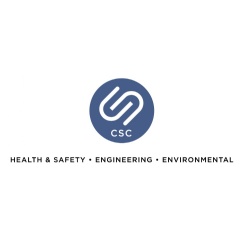The Indoor Microbiome and Its Impact on Indoor Environmental Quality
Clark Seif Clark provides building assessments, testing and consulting services to identify and mitigate microbial and chemical exposure concerns.
Although the microbiome is generally invisible to the unaided eye, a quick peek with a microscope can begin to reveal the amazing diversity of both airborne and settled microorganisms that we touch, inhale and ingest every moment of our lives.
Last year, the U.S. Environmental Protection Agency (EPA) announced the release of a new webpage to provide information about the indoor microbiome. All of the living microorganisms inside of an indoor environment, and their by-products, are collectively known as the indoor microbiome.
The indoor microbiome that surrounds each of us is diverse and dynamic, made up of bacteria, viruses, fungi and other single-celled organisms. These microorganisms may be growing or inactive, and may be present in different life stages, such as spores or growing cells. EPA states that every building has a microbiome, but there is no normal or typical indoor microbiome found in all homes or buildings. The indoor microbiome in an individual home or building depends on many factors, including the people and pets that occupy it and their behaviors; the type, design, maintenance, building materials and location of the home or building; and climate and other local conditions.
“We’re in the business of protecting people from invisible hazards like chemicals, radiologicals and biologicals. Although the microbiome is generally invisible to the unaided eye, a quick peek with a microscope can begin to reveal the amazing diversity of both airborne and settled microorganisms that we touch, inhale and ingest every moment of our lives,” said Derrick A. Denis, Vice President of Indoor Environmental Quality for Clark Seif Clark (CSC). “In brief, the microbiome and its impact on humans can be quite complicated. Generally, the background microbiome is innocuous, assuming you use normal universal precautions such as washing hands, keeping fingers out of your nose, and not licking doorknobs. In some instances the microbiome can present precariously high concentrations of common organisms and their byproducts or can present atypical organisms of concern. The microbiome can contain an amazing diversity of concerning constituents like norovirus, SARS-COV2, MRSA, E. coli, Anthrax, Legionella, C. diff and more. Building features, use and conditions can work to either promote or dissuade the growth and distribution of these microbials. The choice of building materials, temperature and humidity, condensation or water leaks, plumbing design and use, and airflow patterns can all play a role. The movement of microorganisms in the indoor environment may also be influenced by HVAC systems, opening windows and doors, and use of fans.”
Inhalation exposure to elevated concentrations of many substances found indoors, such as mold, pollen or dust mites, can cause respiratory irritation, allergies and could even trigger an asthma attack in some people with the condition. Breathing Legionella can result in Legionnaires’ disease or Pontiac fever, and exposure to a virus, such as the norovirus or coronavirus, could result in serious illness.
Helping clients create optimal indoor environments in residential, commercial and institutional properties are the building science and industrial hygiene experts at CSC. Their professionals provide building assessments, testing and monitoring to identify and mitigate exposure risks to mold, bacteria, viruses, chemicals and more. CSC has even sponsored an educational video about the indoor microbiome that can be seen at: https://youtu.be/oTbWz86uj7g
To learn more about this or other indoor air quality, building science, occupational, environmental, health and safety services, please visit www.csceng.com, email csc@csceng.com or call (800) 807-1118.
About Clark Seif Clark
CSC was established in 1989 to help clients in both public and private sectors address indoor air quality, occupational, environmental, and health and safety (EH&S) issues. CSC is a leading provider of these services with multiple offices along the western seaboard and southwest. The company believes in science-based protocols and has a strong background in engineering, making them the preferred environmental consultants to industrial clients, healthcare facilities, architects, schools, builders, contractors, developers and real estate professionals.
( Press Release Image: https://photos.webwire.com/prmedia/12710/283719/283719-1.jpg )
WebWireID283719
- Contact Information
- Paul Cochrane
- President
- Cochrane & Associates, LLC
- Contact via E-mail
This news content may be integrated into any legitimate news gathering and publishing effort. Linking is permitted.
News Release Distribution and Press Release Distribution Services Provided by WebWire.

